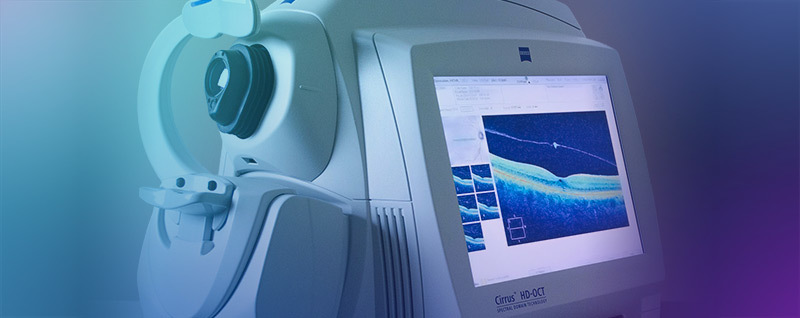
You Thought Already We Had Cool Tech? Well That Is Definitely True!
At ModernEyes Eyewear + Eyecare, we try to stay up on the latest technology to help keep your eyes as healthy as possible, above and beyond fitting you in the best glasses or contact lenses for your personal style and lifestyle needs. We are excited to announce a new piece of technology we will be offering to all of our patients, but before we get to that I just want to point out something cool that we've offered since we opened last September. If you're a current patient, you probably already know this, but for those of you who don't, we do complimentary preliminary retinal photos as a baseline for all our new patients. That way, we have something to compare to should we start to see changes in the back of the eye. Many offices charge for this service, but we have decided to do the first round on the house.
Now For The New Stuff... [Drum Roll Please!]
To supplement the photos, we will now begin offering imaging with Optical Coherence Tomography (OCT). OCT is a non-invasive diagnostic instrument that is used to image the retina. It is becoming utilized more and more frequently to detect problems in the eye before you would experience any symptoms. The OCT allows optometrists to see a cross section and/or a 3D image of the retina, leading to early detection of a variety of eye diseases and conditions such as macular degeneration, glaucoma, and diabetic retinopathy. These three eye problems are the top three eye diseases known to cause blindness, so it is important to catch them early! In addition, the OCT can be used with anterior segment lens attachments to allow me to view the front part of the eye in more detail, as well as to assist me in fitting scleral contact lenses. Scleral contact lenses are used for patients who are unable to wear the soft contact lenses you’re probably familiar with as well as the more traditional rigid gas-permeable lenses (RGPs) due to conditions like severe dry eye or keratoconus, a degenerative condition of the cornea.

So Far So Good: How We've Used It So Far...
We have had the OCT for about a month now and are learning the tricks to obtain images quickly and easily. In the short month we have had it in the office, we have already used it on two scleral lens fits. The OCT has come in handy when examining patients who take high risk medications, such as those to treat rheumatoid arthritis, some migraine medications, and cancer treatments. These medications can cause changes to the retina, specifically the macula that may not be reversible. When we have patients on these medications, we can use the OCT to detect changes before we can see them with a more basic examination. If we find a change to the back of the eye that might be related to a medication, I will work with the prescribing doctor (primary care physician, rheumatologist, etc.) to either reduce the dosage or potentially switch medications.
We have also used the OCT to confirm swelling of the optic nerves on a patient well before the patient had any symptoms of the problem. Thankfully, we were able to send the patient out for further testing which confirmed that the patient did not have a brain tumor, and the patient will be treated appropriately for the root cause of the swelling. Once the swelling goes down, we will be able to do another exam to determine the best glasses and/or contact lens prescriptions. Had our patient not come for a routine prescription update, the symptoms would eventually have gotten severe and our patient’s treatment and recovery would have been much more difficult.
We are thrilled to be able to share this new and exciting equipment in our office with all our patients. We want to be able to provide the best care possible to our patients, and adding in new technology sure helps the cause.
